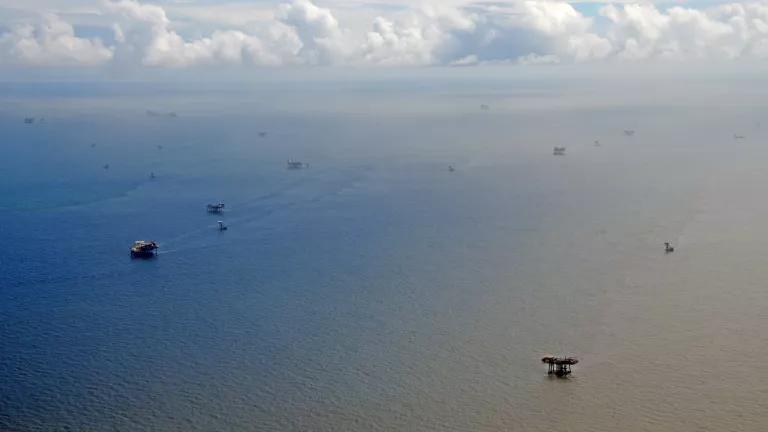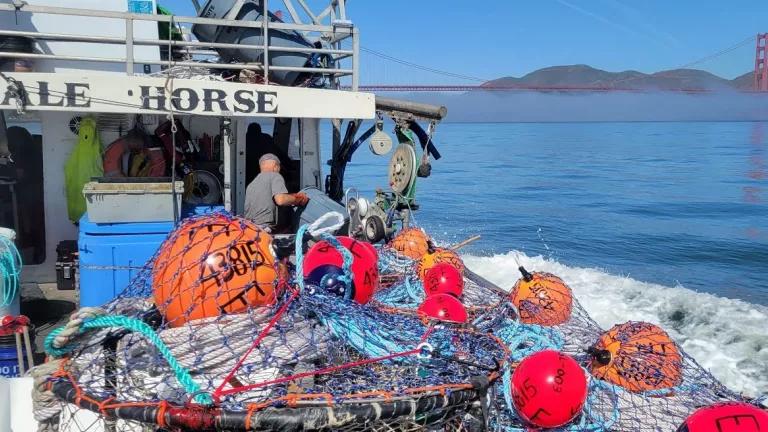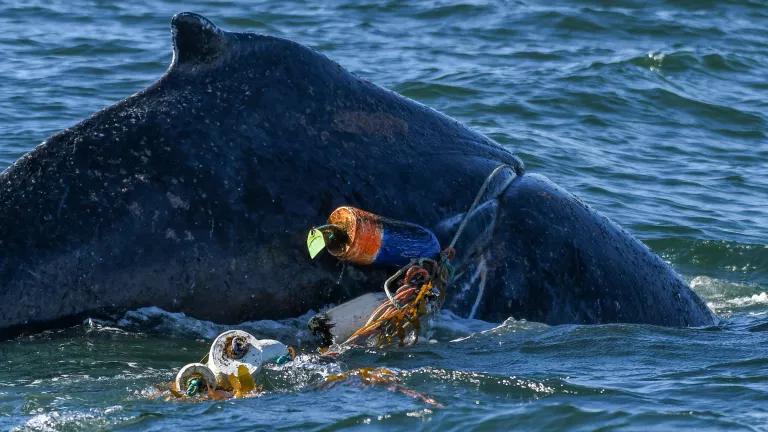
I'm sharing this space today with guest-blogger and legal fellow Jon Wiener.
I grew up gazing at the Suisun Bay Ghost Fleet through the window of my parents’ car as we would cross the Benicia Bridge on our way to the mountains. Later, when I started riding Amtrak to visit friends and family, I was able to get a bit of a closer view. Even as an adult, I always thought the ships seemed majestic and mysterious.
Imagine my disappointment, then, when I came to NRDC and learned that years of neglect had essentially turned the fleet of 57 Navy support ships into an unregulated, unpermitted toxic waste dump. As my colleague Michael Wall has blogged about previously, these historical icons had been leaching large amounts of lead paint and other heavy metals into the bay for decades. (This revelation was eerily similar to a disappointing discovery in my previous career as a reporter, when I learned that Moffett Field’s historic Hangar One, which I had toured as a young boy while attending Blue Angels shows, was polluting South Bay wetlands). This pollution continued in spite of Congressional mandates, environmental laws, and even some internal alarms. In fact, little happened until NRDC and its partners sued the U.S. Maritime Administration. Then, after years of fighting, MARAD—under the direction of a new administration—agreed to a court-ordered schedule to clean up and remove the ships.
Nonetheless, it was still quite the thrill last week when I finally set foot on the ships, as NRDC staff scientist Miriam-Rotkin Ellman and I joined San Francisco Baykeeper and the Regional Water Quality Control Board to endure triple-digit heat and check on MARAD's progress. What we saw was very encouraging.
As a result of our litigation, MARAD has already removed 10 of the ships in worst condition—including the World-War-II–era “Victory” ships such as the two pictured below—cleaned them in dry-dock, and sent them to recyclers.
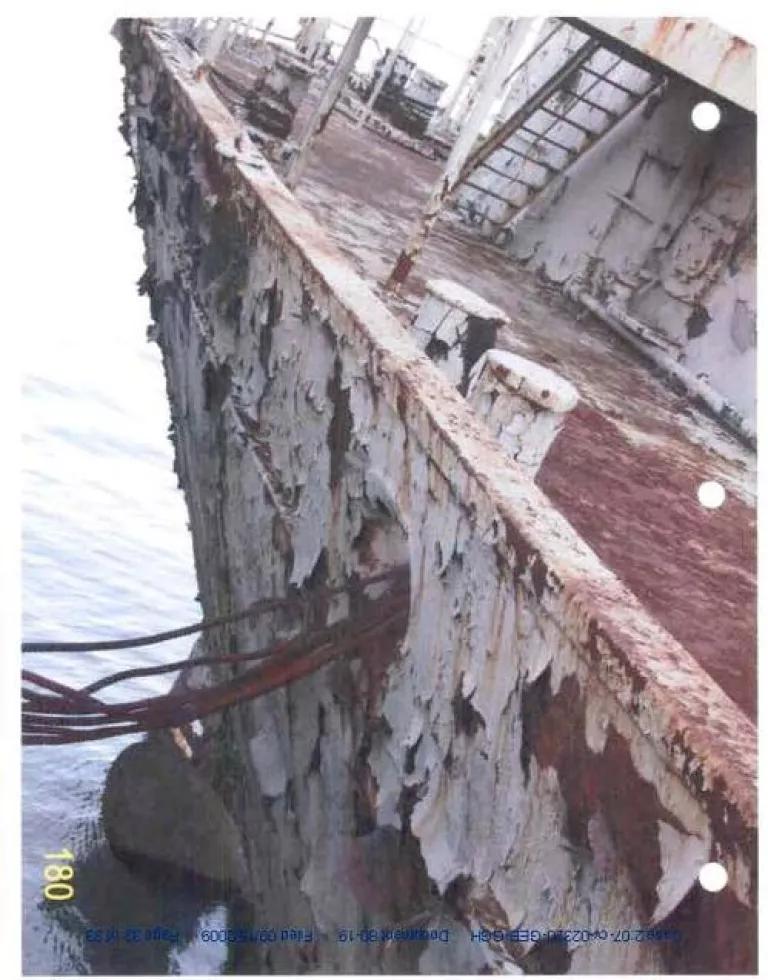
An 11th ship was transferred to the Navy, and several more are slated for removal by the end of September—ahead of the court-ordered cleanup schedule, at least so far. MARAD crews have also swept and vacuumed up the piles of lead paint and other waste that, until recently, littered the ships’ decks and flowed into the Bay with every rain storm. MARAD continues to do regular maintenance, reducing the likelihood that this winter’s storms will wash yet more toxic paint debris into the Bay.
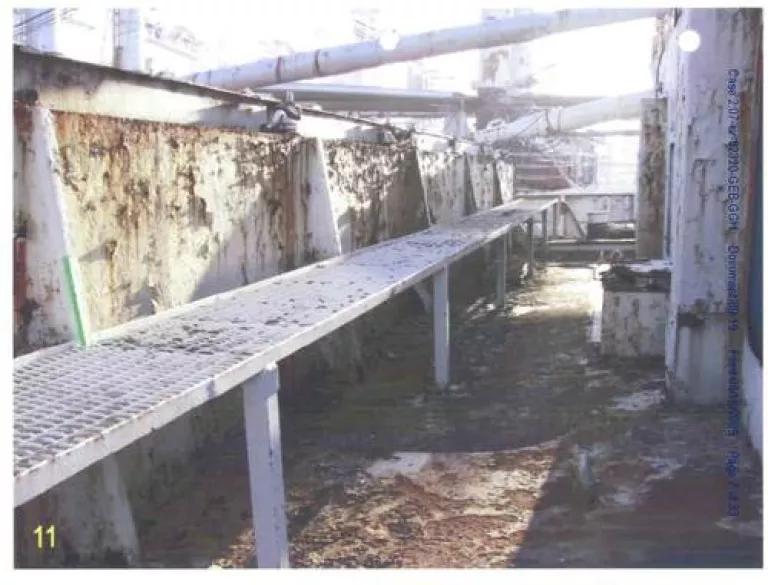

Paint chips and other waste on the deck of the President (at left in January 2009) were removed this spring under terms of the court-ordered settlement. Last week, MARAD crews performed maintenance sweeping and vacuuming on the President (at right) to prevent waste from accumulating again.
In April through June alone, MARAD crews removed several hundred large drums of hazardous waste, which the agency then sent to a permitted facility for proper disposal. The agency has also replaced missing screens on drains around the fleet, and installed protective “wattles”—semi-permeable tubes filled with walnut shells—to filter out waste as it approaches the drains. And an agency contractor has begun hydroblasting the upper hulls of ships to remove peeling paint before it can fall into the water.
This progress is welcome. It also highlights the senselessness of MARAD’s refusal to implement these simple protections sooner. By ignoring its responsibilities until we sued, MARAD allowed the environmental contamination to continue and drove up the costs of the cleanup. Indeed, the cleanup is far more expensive now that scrap metal prices have collapsed and so much waste has accumulated—initial sweeps of a single vessel’s deck took up to two weeks, in contrast with a day for follow-up maintenance. Two public agencies and several environmental groups also had to spend several years litigating over something MARAD should have done years ago. Most importantly, San Francisco Bay and its estuaries are now contaminated with more than 20 tons of heavy metals that should never have been released.
Still, late is better than never. Since the recent change in administration, and MARAD’s litigation loss, the agency has appeared genuinely committed to reversing the Suisun Bay fleet’s decades of neglect. Plenty more still needs to be done, and NRDC and its partners will be here to make sure it does. But the progress MARAD has shown is significant, and is an important step towards giving the Bay-Delta—along with the farmers, fishermen and other residents that depend on it—a chance to recover.


